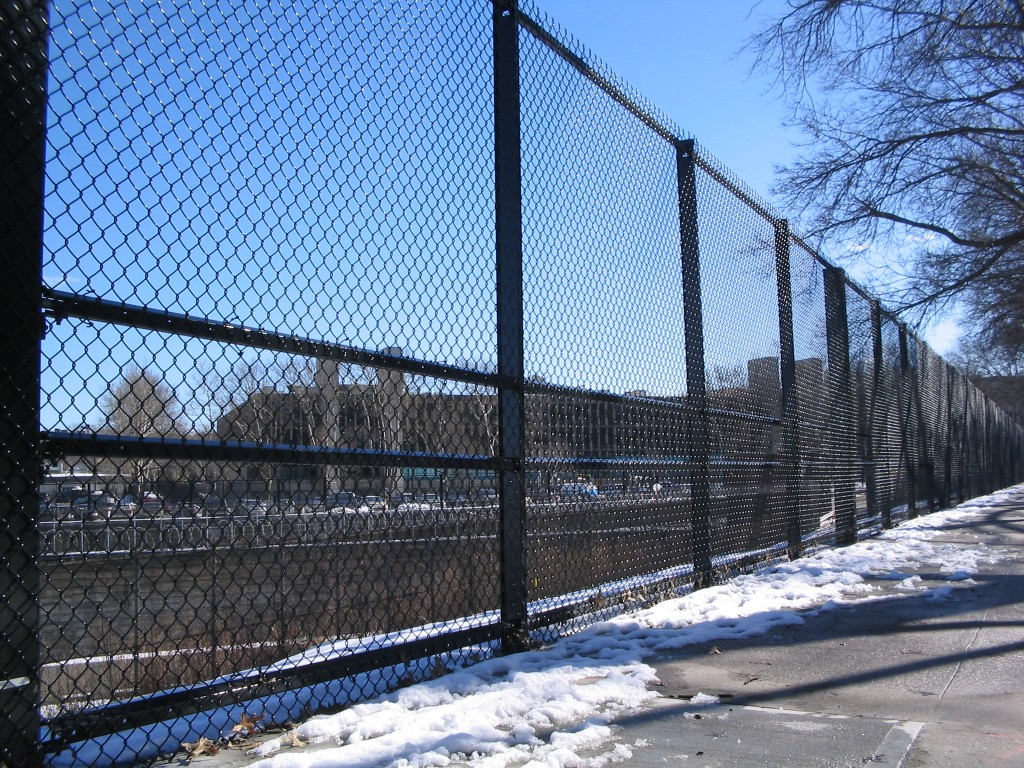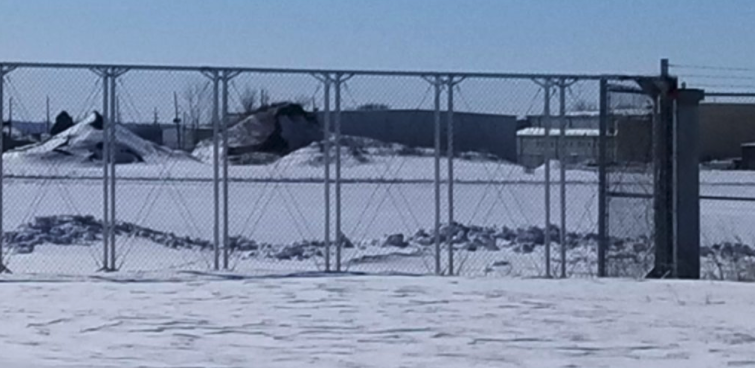Fences and Winter Storm Damage

As any long-term resident of the American North or Midwest can testify, winters tend to be harsh. Frost, ice storms, heavy snowfall, high winds, numbingly cold temperatures—all of these pose potential hazards to pets, persons, and even property. Because fences are permanent outdoor features, they are susceptible to the consequences of blizzards and extreme cold; and post-winter repairs are not an uncommon necessity. Also: if you are thinking of installing a fence, consider what material it will be made of; some materials withstand the cold better than others.
FOR A FREE ESTIMATE:
Wood fence panels in winter
The strength of a wood fence and the resilience it has against blizzard conditions depend on the integrity of its source. Fence panels fashioned from heartwood (the interior “spine” of the tree) tend to be more rigid and sturdy than their sapwood counterparts (these derive from the tree’s more delicate outer layers). For this reason, we do not recommend purchasing pre-made fence panels from the big box stores—while less expensive, these tend to be flimsy and fragile, especially in adverse weather conditions.
One of the winter-related dangers for wood fence panels is expansion and contraction. A great measure for preventing this consequence is painting and staining. If water (rain, melting snow, accumulated morning dew, etc.) becomes absorbed into the wood and then freezes/melts during/after winter, it’ll expand and contract—warping and possibly splitting the wood. On this subject: throughout winter, weather permitting, we recommend gently brushing off any buildups of snow on your fence. The drier you can keep your fence before things start melting, the better.
If you have a painted/stained fence: when the snow and ice begins to melt, make sure it forms beads of water on your fence panels; if you are not seeing this effect, add another layer of paint or staining when spring arrives.
Vinyl fence panels in winter
One of the major selling points of vinyl fencing is long-lasting resilience. PVC material will become more flexible in colder temperatures but—unless struck by an unusually strong impact—should not break. It’s also rust-resistant, so you don’t have to worry about keeping the fence dry throughout the year as is the case with vinyl.
That said, you should keep snowbanks off your fence so that pressure doesn’t build against your posts during times when PVC is more flexible. As with wood fencing, you can clean snow buildup off the fence panels with a broom. Clear away snowbanks using a shovel or snow blower (making sure the snow is not being hurled directly at the fence).
Chain link fence panels in winter
When it comes to outdoor fencing in winter, chain link is generally the most durable and resilient. (Metal does not shrink, contract, or become more flexible in the cold like other materials.) Here at American Fence Company, all of our chain link fencing is also engineered for superior rust resistance.
What about fence repairs after winter?
Of course, no matter the type of fence you have, there’s always a chance of fence maintenance being necessary in the wake of a blizzard or ice storm. In these situations, reach out to an experienced fence contractor that offers repairs and maintenance among its services. In the case of American Fence Company, we maintain ten branches across the Midwest and serve thousands of customers each year. Our staff consists of rigorously trained industry professionals who’ve been taught the ins and outs of fence design, construction, and repair. If you need post-winter maintenance—or maintenance at any time throughout the year—simply give us a call!

